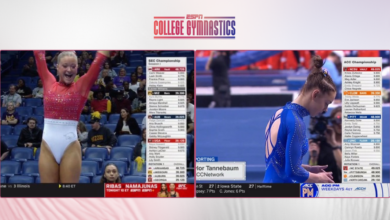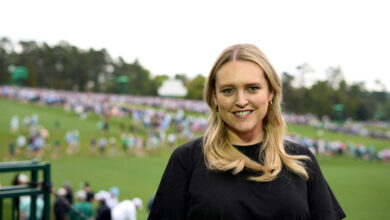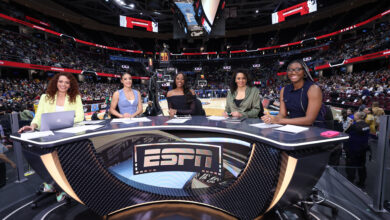Executive Voice: Focus On The Data – In Context – And Realize That Sports Truly Matters
Despite these unprecedented circumstances, the amount of time spent with sports on TV and Digital actually grew from last year

EDITOR’S NOTE: In her role as Senior Director of Strategic & Brand Insights, Flora Kelly @ESPNFlora is charged with overseeing ESPN’s market, audience, fan, and media insights in order to strengthen the ESPN Brand and identifying growth opportunities for the business.
Context matters … especially in this environment. As we all know, the pandemic has disrupted our personal lives, work lives, and family lives …. and sports are no different.
Trying to make sense of the performance of individual sports is almost impossible with disrupted sports seasons, a pandemic, and the Presidential election.

Even with all this confusion, there is one thing to keep in mind. Despite a pandemic, record-setting cable news ratings, and a strange sports season, the amount of time spent with sports on TV and Digital actually grew from last year – meaning the role of sports is still central in Americans’ lives.
Here are few things to keep in mind when analyzing the state of sports media in the pandemic era.
- We’ve been here before. Well, sort of. With every presidential election, we see an increase in news consumption and a temporary decrease in sports ratings, and this year is no different. We see that the combined audience to cable news networks is up substantially year over year across all demos. In fact, the cable news audience among older adults is at its highest point of at least the past five years – with a 43% increase from the last Presidential election in 2016 and a 38% increase from 2019.
Against this backdrop, the NFL’s performance is in line with what we typically see during an election year. Through Week 5 Sunday, the NFL is down 11%. In 2016 during that same timeframe, it was also down 11%. This is important context as this season has the added dynamics of scheduling changes and stiffer competition. . . . Speaking of disrupted sports schedules.
- Year over year (YOY) ratings comparisons are of little value for sports playing out of season … Not only are we contending with a Presidential election, but now throw in sports that don’t typically play in the Fall; and the data has a lot of noise. It isn’t a coincidence that the sports playing out of season are facing the largest variances in performance. NBA Finals (-50%), Stanley Cup (-61%), Kentucky Derby (-43%), and US Open Golf (-45%).
First, we have to ask ourselves what are we comparing these sports against? Outside of the confusion fans face trying to figure what’s on and at what time. None of these sports have ever contended with a Presidential election. So, unlike the NFL, we have no frame of reference to what a Stanley Cup or NBA should do in this environment.
Second, these sports face unprecedented sports competition. Take the NBA Finals for example. This year it faced direct competition from two “Sunday Night Football” games and MLB Wild Card Games. Games 4-6 faced sports competition that was 8-13 times larger than 2019.
Once you take the yearly comparisons out of it, you are left with substantial audiences for TV. The NBA Finals broadcast averaged 7.5 million viewers and won the night on TV across all age groups 4 out of 6 times.
- Americans are spending more time watching sports on TV. During the first five weeks of the NFL season (through Sunday), Americans spent more time watching sports events than they did during the same period last year (+2%), despite a decrease in available content. The amount of time fans are spending with sports suggests sports are healthy and grown in importance in front of the TV set.
Again, context matters. During the last Presidential election in 2016, we saw a drop in sports consumption at this same time. Overall, sports event content was up 13% from 2015, but consumption was down 7% among total viewers.
More evidence that sports are still central in Americans’ lives is its growth in TV share. Sports event viewing is representing a larger share of TV viewing this year, especially among younger adults.
What about ESPN’s performance? ESPN is currently up 1% YOY among total viewers and flat among Adults 18-49. Again, to put that into much-needed context, ESPN suffered double-digit YOY declines during the last Presidential election in 2016.
- Digital Sports keeps growing. TV ratings are not the only bell-weather that gauges the health of sports. In September, ESPN Digital set records for streaming in terms of uniques and time spent and was up 15% from last year. Our top streamed events of the month were the four Monday Night Football games, followed by a series of NBA playoff games. This past Sunday, there was a total of 918 million minutes spent with ESPN Digital. This was the most time spent in a single day this year. ESPN Digital drew its biggest weekend audience this past Saturday and Sunday since last year with 49 million uniques.
No one can predict what next year will look like. However, when you focus on the data, what this year points to is the resilience of sports in fans’ lives. It also suggests that for the most part, ratings decreases are temporary resulting from an abnormal sports season during an abnormal period of our lives.







